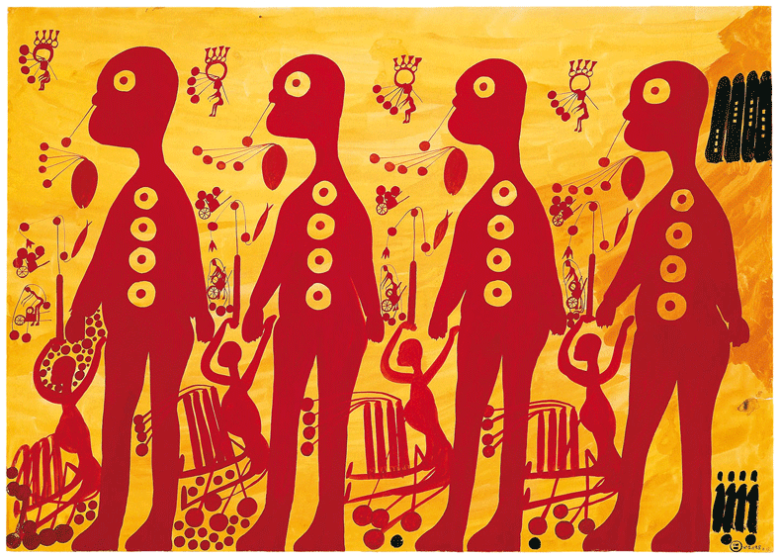
Invitation to discover an oeuvre: Carlo Zinelli, by Chloé Falcy, tour guide at the Collection de l'Art Brut
Under this heading, we regularly feature the favorite work of one of our Collection de l'Art Brut tour guides.
Carlo Zinelli, by Chloé Falcy
Jean Dubuffet, the founder of Art Brut, declared that "In the end it would be better, more coherent, to decree, once and for all, that the creating of art, wherever it crops up, is in any case pathological. Perhaps it always rhymes with madness. But should this be so, could there not be a positive madness, one that liberates? A madness that builds up rather than destroys?"
The first time I came face to face with works by Carlo Zinelli, I was impressed by the aestheticism and order governing them. There was a certain savagery to them, yet they did make sense: they "held up," with a new and enigmatic logic of their own. In the bosom of the world portraying him, serial man is endlessly repeated, spouting doubles whose stylized silhouettes bring to mind the frescoes of archaic civilizations.
Upon discovering Zinelli's life story, we cannot help being struck by the sensitive young man's biography. Here is a lover of animals and nature who, at the age of 32, was driven off-course by the madness of war, causing him to be interned for life at the age of 32. His condition came to deteriorate during the sixteen years he went on to spend in the gray world of the San Giacomo alla Tomba hospital in Verona. Here, too, his survival instinct propelled him to build up a body of 3000 works, as drawn on the front and the back of his supports.
His realm served as a microcosm with the number 4 reigning as king. As such, it came to represent something magic for him: the harmony of a life core on the fringes of reality, an incantation enabling his very existence. Thus, he took to drawing up four-by-four human groupings, ever evading one side of them. The tanks, the agricultural machines and everyday objects are depicted as if fragments borrowed from the world preceding his illness. In some of his works, his name—Caaaarlo, with a twice doubled a—is added.
If there is a madness to these works, it is a "constructive" madness, rich in primary figures, in life-and-death scenes that leave us baffled. This pictorial output might be considered a new graphic language, meant not to communicate with others but to elaborate a world obeying orders known only to its very creator. Such a language, beyond any of our own codes, still encloses all the mystery of those rows of humans and animals pressing onwards towards some unknown destination.
Chloé Falcy
30.01. 2018
Publish Date: 11.12.2018